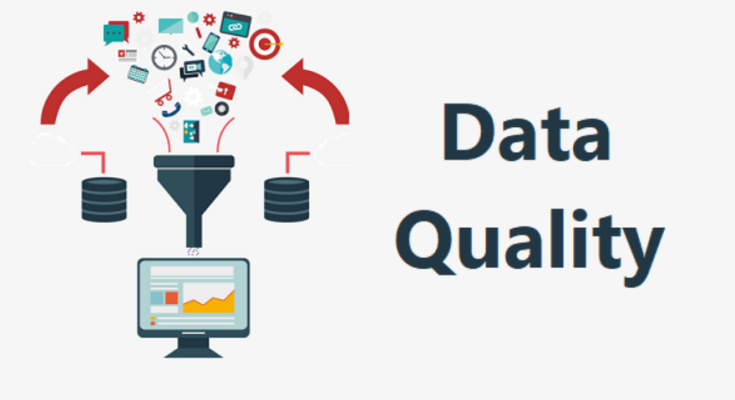JAKARTA, cssmayo.com – If you’ve ever dabbled in data (honestly, who hasn’t in this Techno era?), you know how Data Quality: Ensuring Accuracy and Reliability is the name of the game. Trust me, I’ve been on both sides—pulling my hair out over bad data and fist-pumping when the numbers finally made sense. So, let me spill some real-life tea on how you can up your data quality and actually trust what you see!
In today’s data-driven world, success depends on making informed decisions—and that starts with data quality. Whether you’re running a business, conducting research, or developing AI models, the accuracy, reliability, and consistency of your data can make or break your efforts. Poor-quality data leads to flawed insights, costly errors, and missed opportunities, while spotless data empowers you to stay ahead of the game.
In this article, we’ll explore the importance of data quality, the key dimensions that define it, and actionable secrets to ensure your data is accurate, reliable, and ready to take your performance to the next level.
What Is Data Quality?

Data quality refers to the condition of a dataset and its ability to meet the requirements of its intended use. High-quality data is accurate, consistent, complete, and relevant, enabling organizations to derive meaningful insights and make confident decisions.
Key Dimensions of Data Quality
- Accuracy: The data must reflect the real-world values it represents.
- Completeness: No critical data points should be missing.
- Consistency: Data should be uniform across all systems and sources.
- Timeliness: Data should be up-to-date and available when needed.
- Relevance: The data must align with the purpose for which it is being used.
- Integrity: Relationships between data points should be logical and valid.
Why Is Data Quality Important?
The quality of your data has a direct impact on the outcomes of your decisions, processes, and strategies. Here’s why data quality matters:
1. Improves Decision-Making
Accurate and reliable data ensures that decisions are based on facts rather than assumptions, reducing the risk of costly mistakes.
2. Enhances Operational Efficiency
High-quality data eliminates redundancies, errors, and inconsistencies, enabling smoother operations and better resource allocation.
3. Drives Business Growth
Clean and relevant data helps organizations identify trends, uncover opportunities, and deliver personalized customer experiences.
4. Supports Compliance
Regulations like GDPR and CCPA require organizations to maintain accurate and secure data. Poor data quality can lead to compliance violations and hefty fines.
5. Boosts AI and Analytics Performance
AI models and analytics rely on high-quality data for accurate predictions and insights. Poor data quality can compromise the effectiveness of these tools.
My Personal Experience with Data Quality
I learned the importance of data quality the hard way. Early in my career, I worked on a marketing campaign that relied on customer data to create targeted ads. However, the dataset we used was riddled with errors—duplicate entries, outdated contact information, and inconsistent formatting.
The result? The campaign underperformed, and we wasted time and resources trying to fix the issues after the fact. This experience taught me that investing in data quality upfront is essential for success. Since then, I’ve made it a priority to ensure that every dataset I work with meets the highest standards of accuracy and reliability.
Secrets to Spotless Data
Ensuring data quality is an ongoing process that requires attention to detail and the right tools. Here are some secrets to achieving spotless data that will transform your work:
1. Conduct Regular Data Audits
Perform routine checks to identify and correct errors, inconsistencies, and outdated information in your datasets.
2. Implement Data Validation Rules
Set up automated rules to validate data as it’s entered into your systems. For example, ensure email fields contain valid email formats or that numeric fields don’t include letters.
3. Eliminate Duplicate Data
Use tools to detect and remove duplicate entries, which can skew analysis and lead to inefficiencies.
4. Standardize Data Formats
Ensure that data is consistently formatted across all sources and systems (e.g., using the same date format or currency symbol).
5. Invest in Data Cleaning Tools
Leverage data cleaning software like OpenRefine, Talend, or Trifacta to automate the process of identifying and fixing data quality issues.
6. Establish a Data Governance Framework
Define clear policies, roles, and responsibilities for managing data quality across your organization.
7. Train Your Team
Educate employees on the importance of data quality and provide training on best practices for data entry and management.
8. Monitor and Maintain Data Quality
Data quality is not a one-time task. Continuously monitor your datasets and update them as needed to ensure they remain accurate and relevant.
Real-Life Examples of Data Quality in Action
Example 1: Retail Analytics
A retail company used customer purchase data to optimize its inventory. However, poor data quality led to overstocking of unpopular items and shortages of high-demand products. After implementing data quality measures, the company achieved better inventory management and increased sales.
Example 2: Healthcare Records
A hospital struggled with inaccurate patient records, leading to billing errors and delayed treatments. By adopting a robust data governance framework, the hospital improved data accuracy, reduced errors, and enhanced patient care.
Example 3: AI Model Training
A tech startup trained an AI model using a dataset with missing and inconsistent values. The model produced inaccurate predictions, costing the company valuable time and resources. Once the dataset was cleaned and standardized, the model’s performance improved significantly.
Benefits of High-Quality Data
When you prioritize data quality, you unlock a range of benefits that can transform your organization:
- Better Insights: High-quality data enables more accurate and actionable insights.
- Increased Revenue: Clean data helps identify growth opportunities and optimize marketing efforts.
- Enhanced Customer Satisfaction: Reliable data ensures personalized and seamless customer experiences.
- Reduced Costs: Eliminating errors and inefficiencies saves time and money.
- Stronger Compliance: Accurate data helps you meet regulatory requirements and avoid penalties.
Key Takeaways
- Data Quality Is Essential: High-quality data is the foundation of effective decision-making, efficient operations, and successful strategies.
- It’s an Ongoing Process: Maintaining data quality requires regular audits, monitoring, and updates.
- Use the Right Tools: Leverage data cleaning and validation tools to automate and streamline the process.
- Involve Your Team: Educate employees on the importance of data quality and encourage them to follow best practices.
- Invest in Data Governance: A strong data governance framework ensures consistency, accuracy, and accountability.
Conclusion
Data quality is not just a technical requirement—it’s a strategic advantage. By ensuring your data is accurate, reliable, and relevant, you can unlock the full potential of your insights, improve decision-making, and drive better outcomes.
For me, prioritizing data quality has been a game-changer. It has taught me the value of attention to detail, the importance of continuous improvement, and the power of clean data to transform projects and organizations.
Whether you’re managing a small dataset or a massive database, the secrets to spotless data are within your reach. By following the strategies outlined in this article, you can ensure your data is ready to support your goals and help you achieve success in today’s data-driven world.
Elevate Your Competence: Uncover Our Insights on Techno
Read Our Most Recent Article Reskilling: Adapting Workforces to Emerging Technologies!




